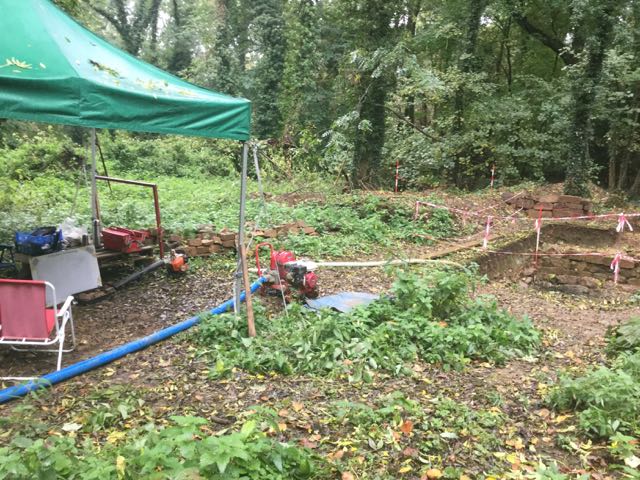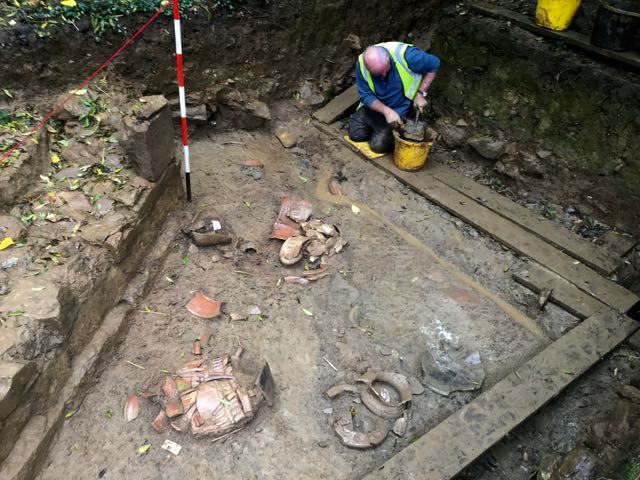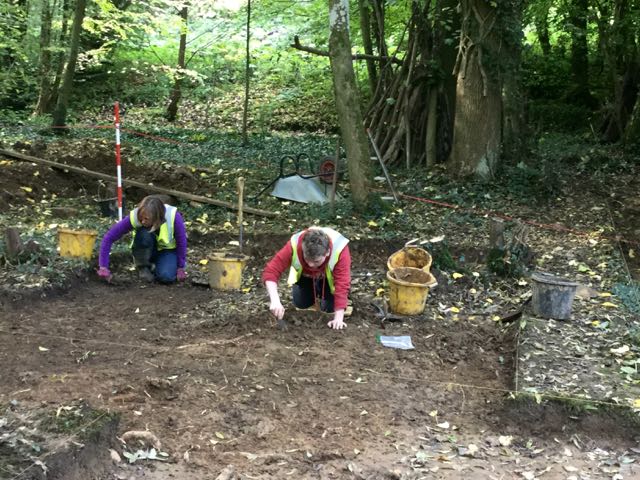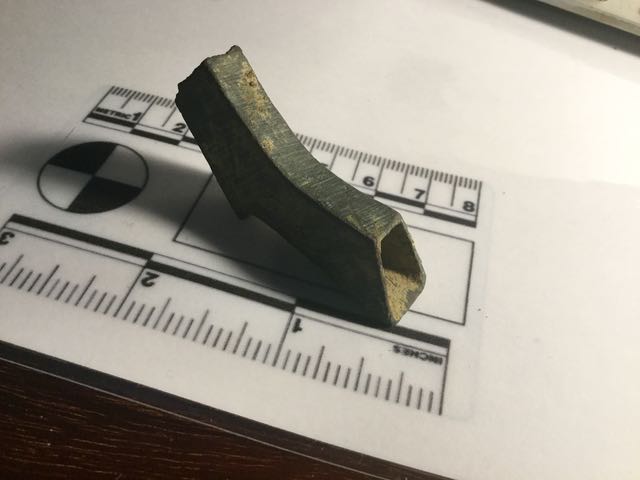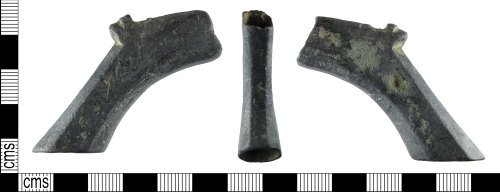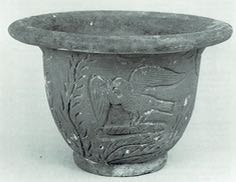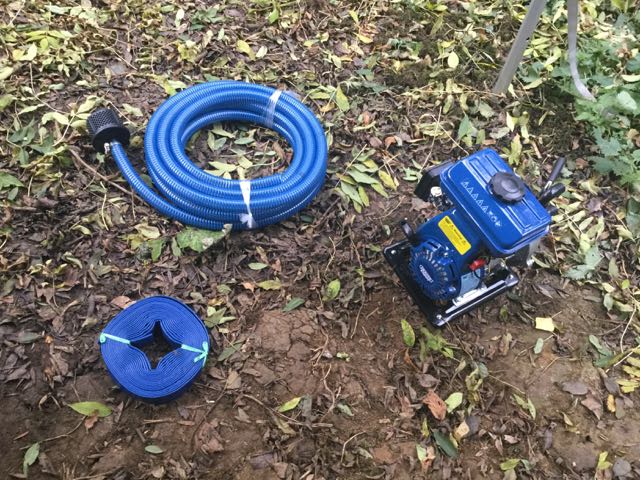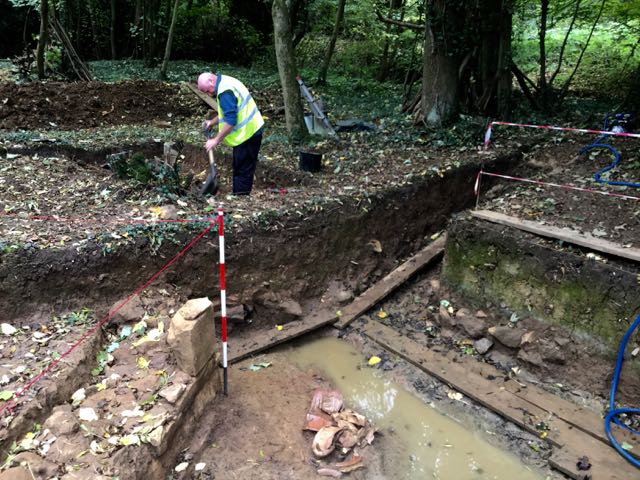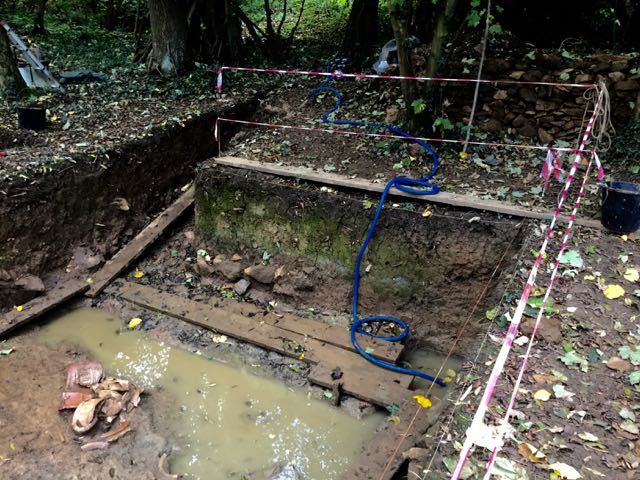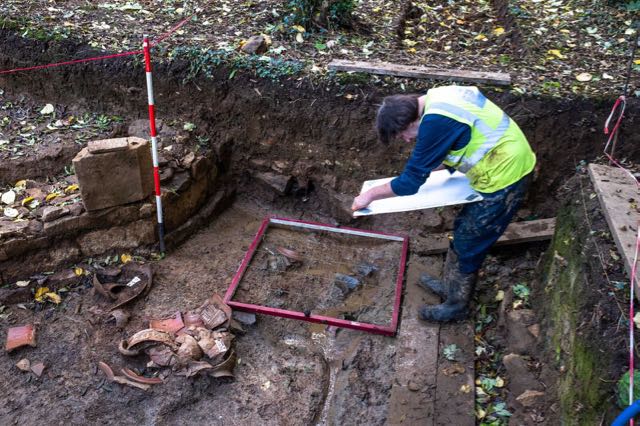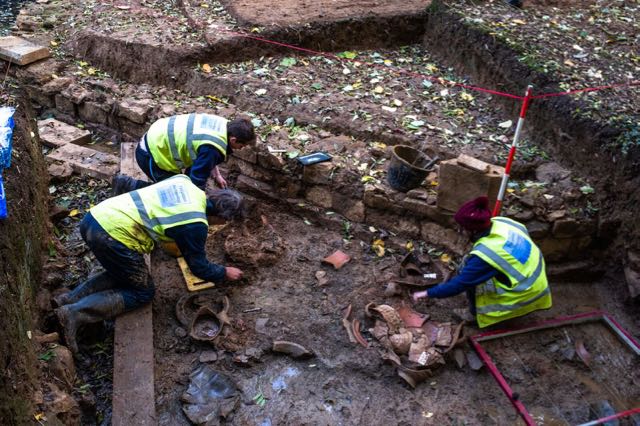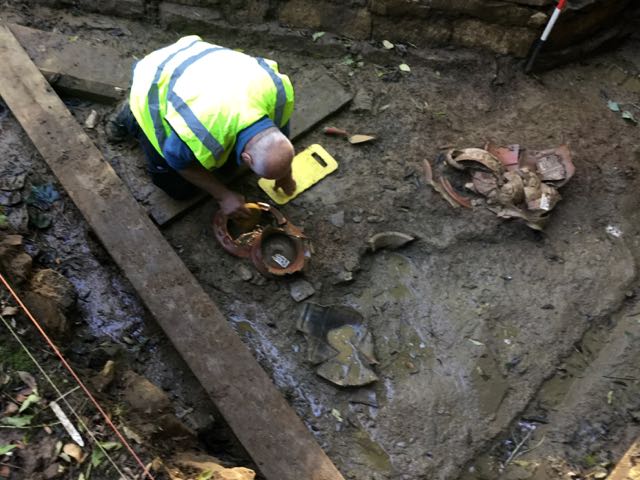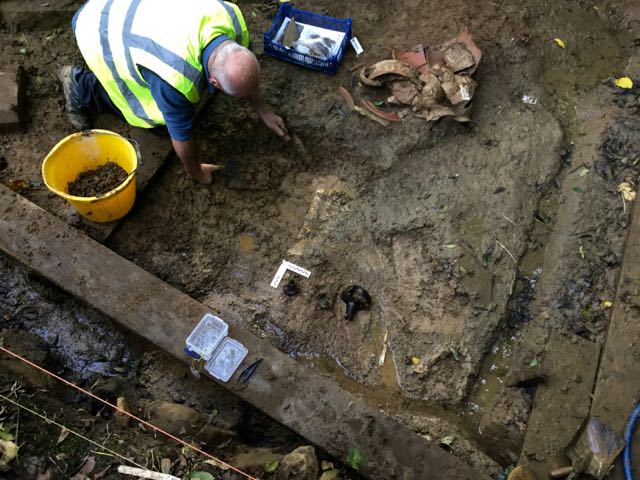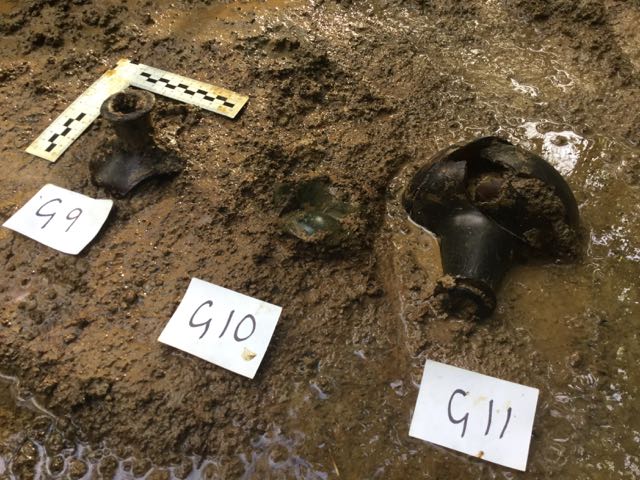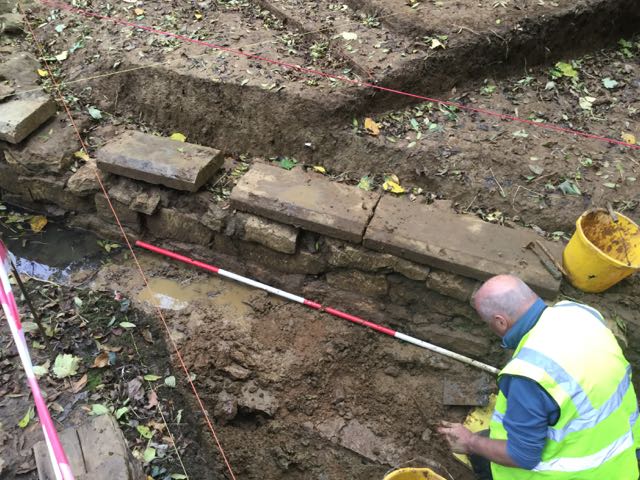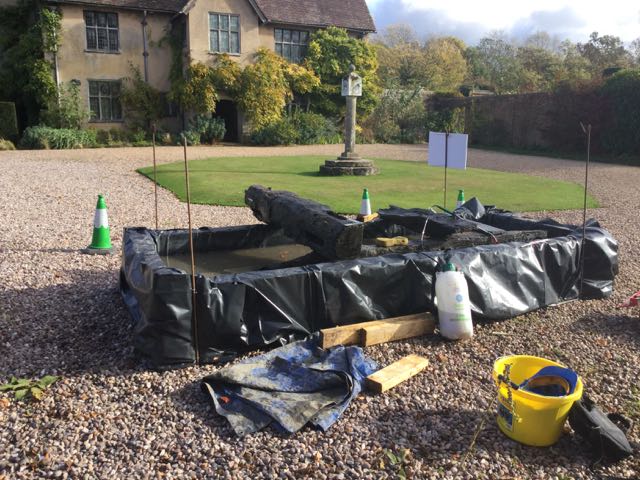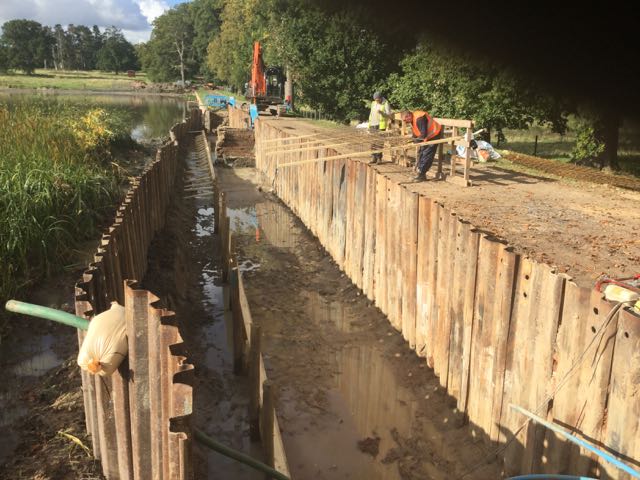
Now that's what I call a trench, the timbers were recovered from close to where the digger is parked.
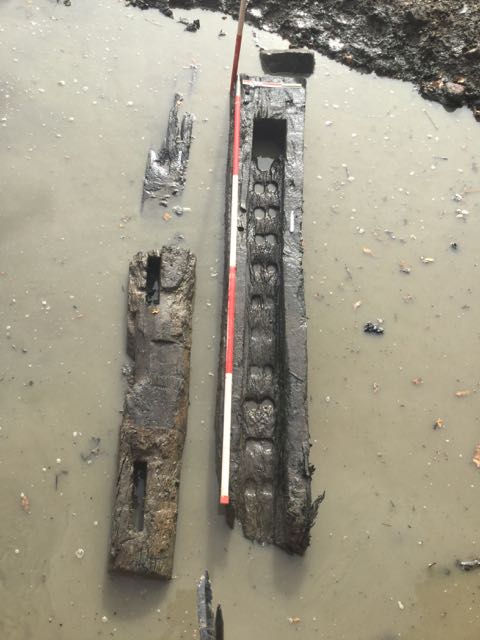
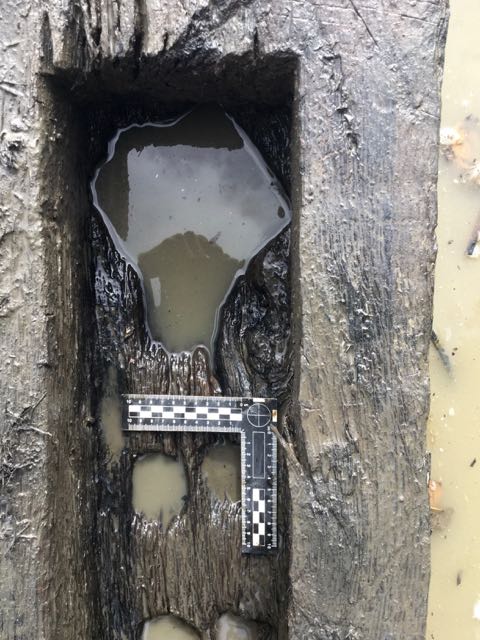
The timber collection with a detail of the top end with drain hole, the
paired hollows are interesting could they be stops for a propping
mechanism to open the sluice or can they have something to do with the
flow of water?
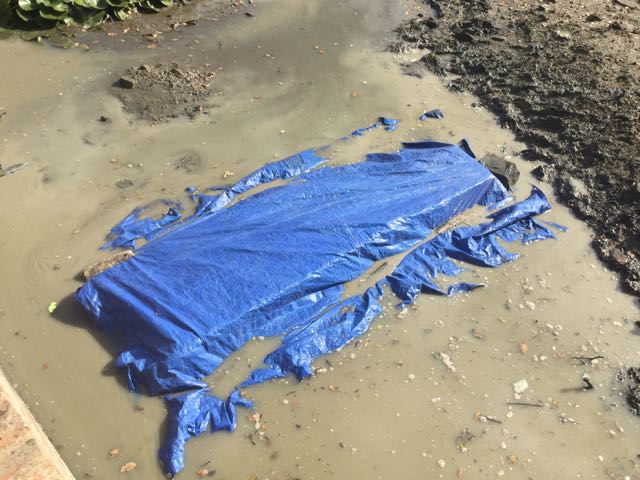
All wrapped up to be kept damp until further notice.
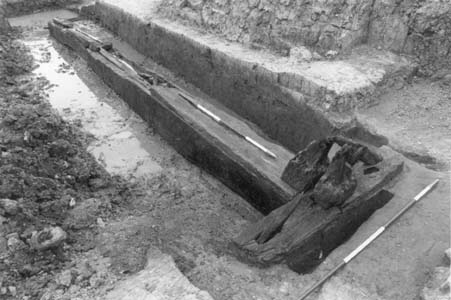
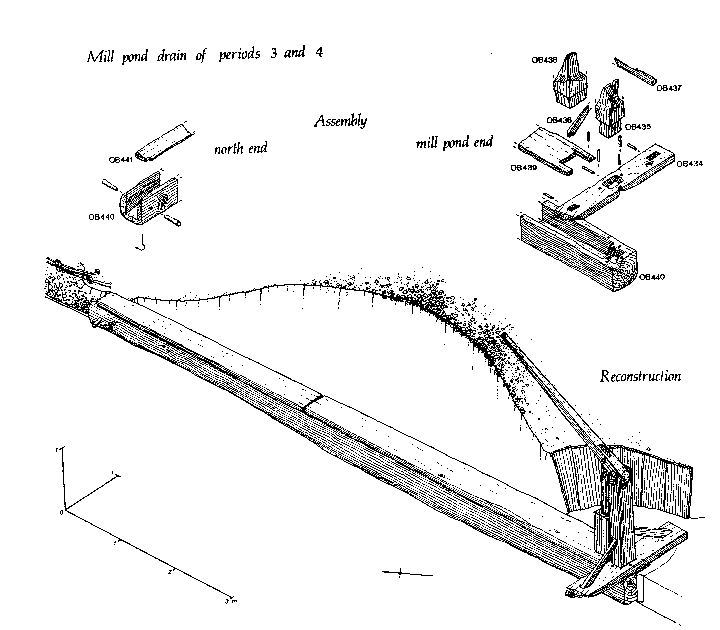
The example excavated under the mill pond bank at Bordesley Abbey (c) Reading University
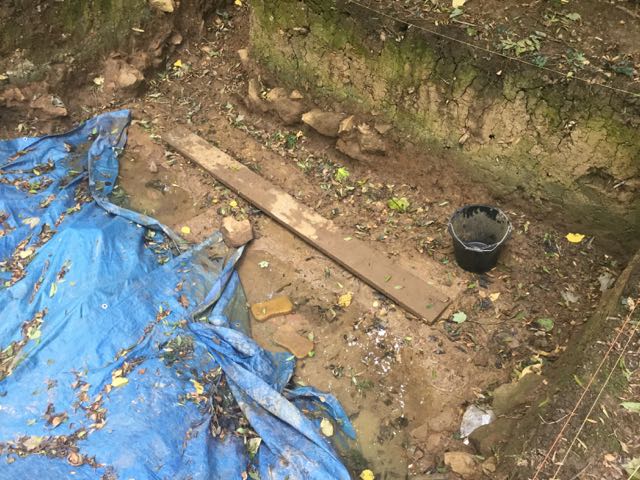
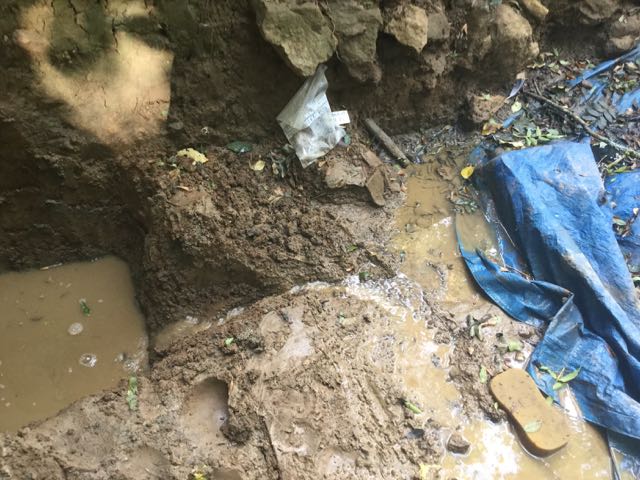
At the start of the week it was all slightly submerged so in went the sump and here is the water draining away, temporarily.
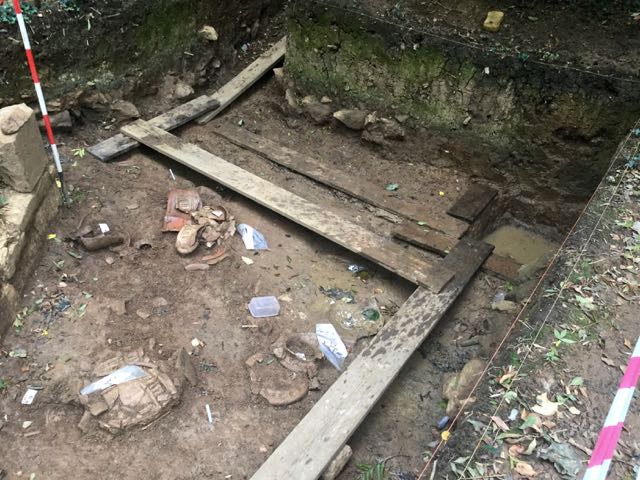
Once drained the surface was still very damp to much of it had to be accessed by balancing on planks.
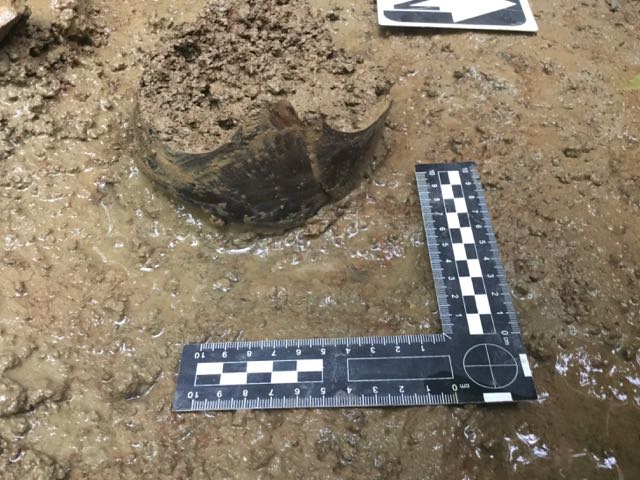
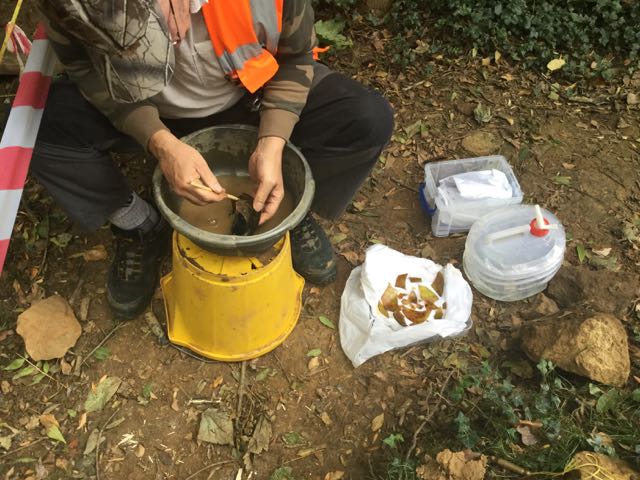
Out come the first piece of fine glassware, an extraordinarily thin
walled case bottle, Peter sets to on the trench side to wash and then
box it up.
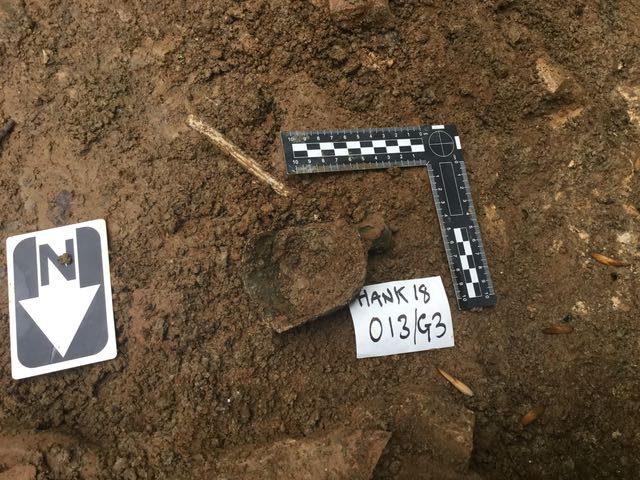
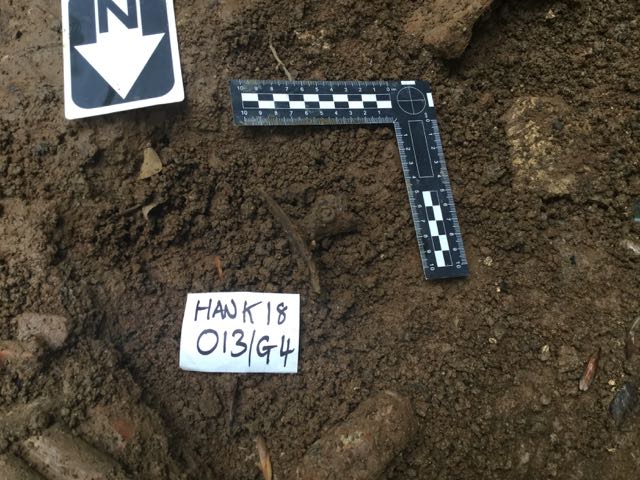
The neck and upper part of a fine flask possibly once containing a
spirit such as genever, the early form of gin plus the foot of a
goblet... for drinking it out of?
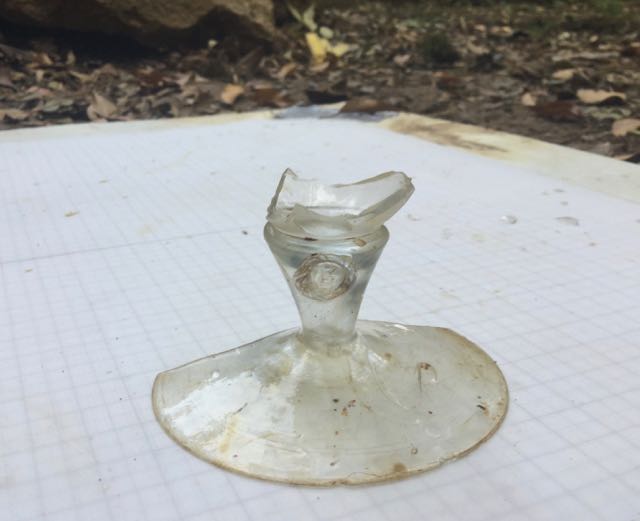
Here it is partially cleaned with a small medallion possibly impressed with a monogram.
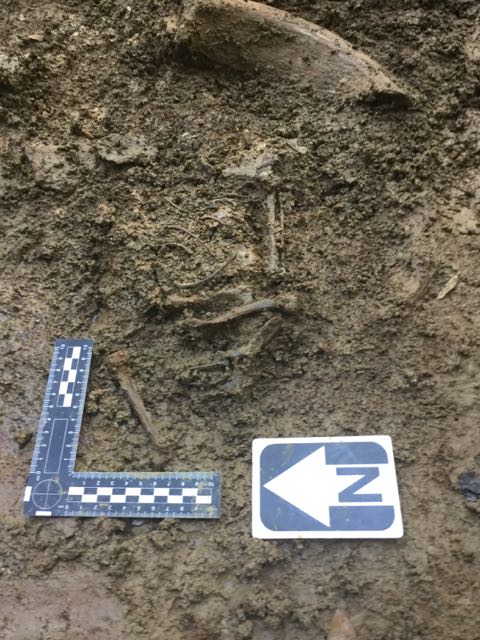
.. and the slightly disarticulated bones of our cat.
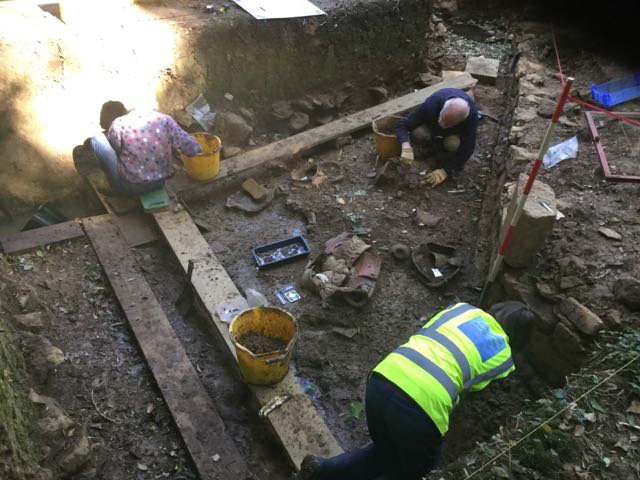
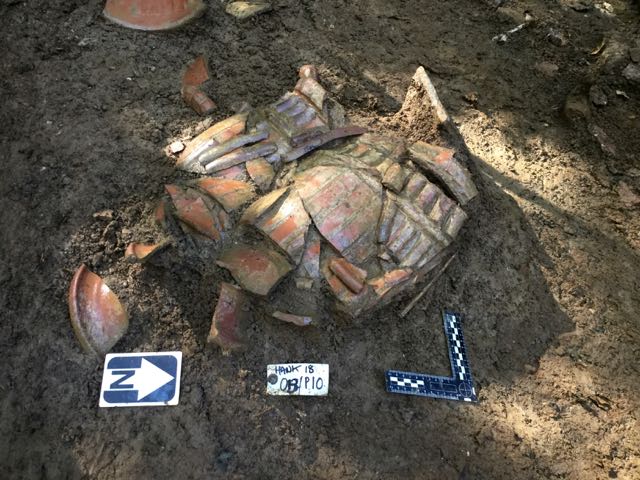
Everyone hard at work with Chris displaying an unexpected halo.
Ian was cleaning pot 10 with suitably impressive results...
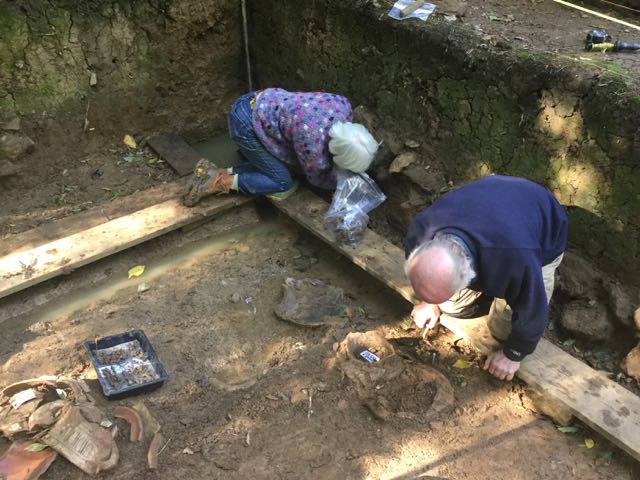
.. before moving on to pot 11, Chris is extracting the remains of another small badly broken but fine case bottle.
After a slightly
damp weekend it was time to bail out again but after half an hour
hauling on a wet rope with a heavy bucket my back began to protest so
the sensible course was forced upon us, look for a mechanical solution.
Christopher and I started to explore options for the
repair/hire/loan/purchase of a suitable pump (more to follow). What
this meant was that in order to keep our heads above water we had to
transfer our attention to the higher ground of the octagonal island
itself. This involved a rather tedious scraping of all the exposed
surfaces to remove months of moss and algae. Slightly more rewarding
was the opportunity to finish stripping the turf and topsoil from the
new area to the east and giving the top of the north west wall a good
clean so it was ready for photographing and planning. The other focus
was the very centre of the island where logic and precedent suggests
there was a large fountain presumably carried on a massive foundation.
No trace yet but still looking. One bright spot was the discovery of a
George III silver sixpence of 1817 at the interface between the topsoil
and the subsoil. Nice but not hugely informative. And meanwhile the
waters keep on rising.
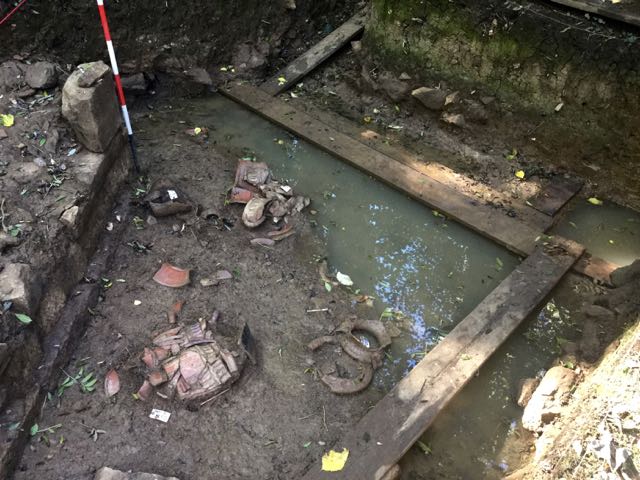
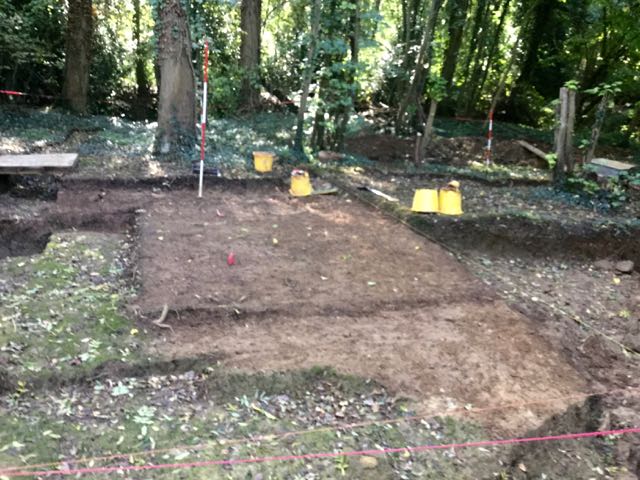
The waters
rising.
Work starts up top.
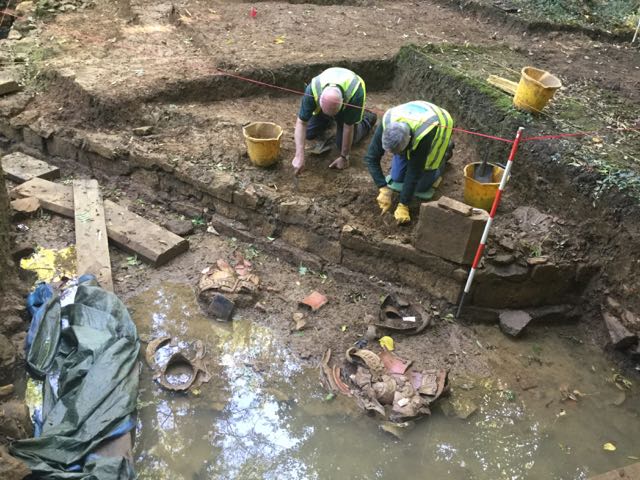
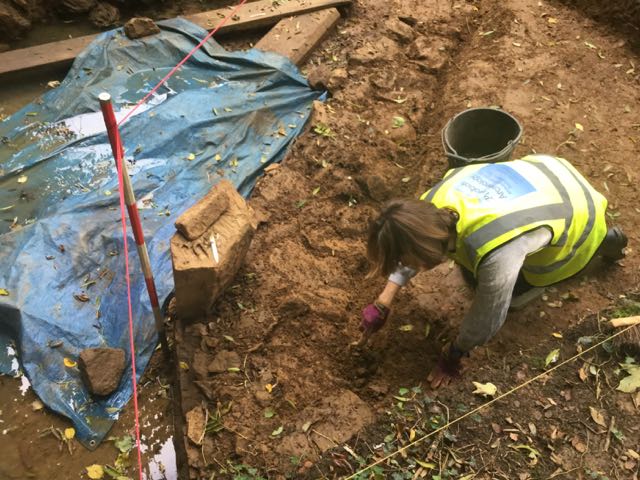
Peter and Chris ( not that Peter, not that Chris ) start cleaning the
wall and Helen finished it off followed by me and the leaf blower.
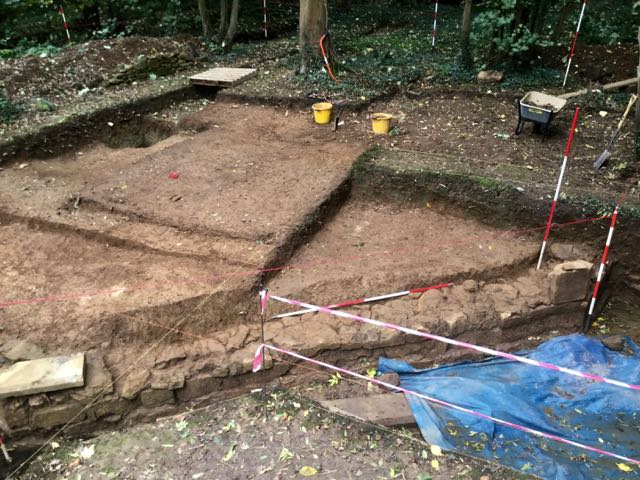
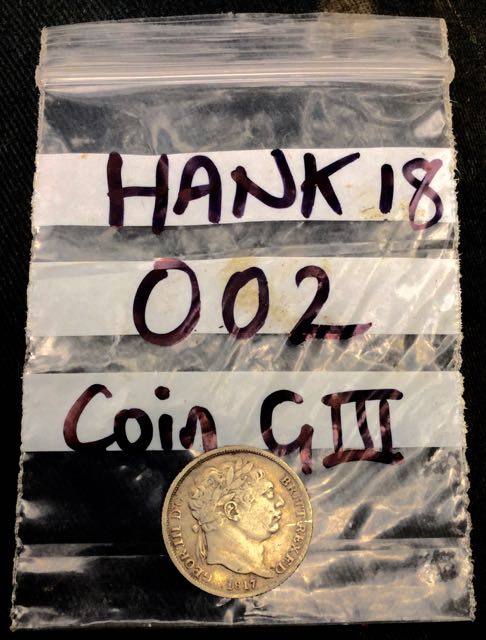
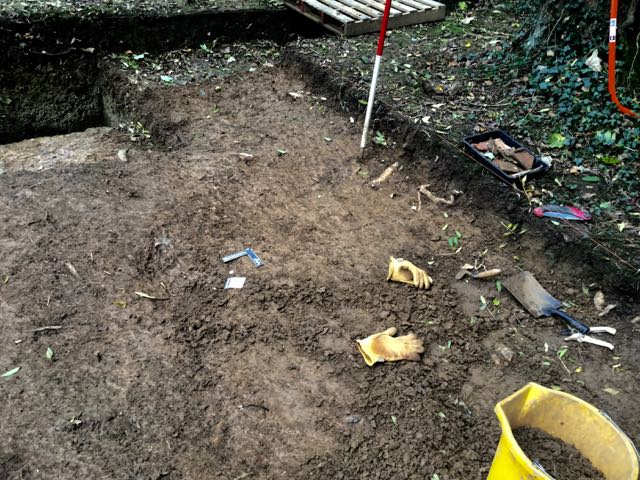
All looking very tidy until the next shower of autumn
leaves. A coin and the find spot as the search
for the central fountain continues.
Once the hire
pump had been returned it was stand by for the new pump - a Draper
87680 Petrol Water Pump (£132 plus free delivery) should anyone be
interested - which performed admirably by draining the swamp - to coin
a phrase - in just under an hour. Whilst that was underway each morning
we took the opportunity to work out up top by continuing to shift
topsoil from the western extension. Once dryish ground was restored we
got on with cleaning and lifting the remaining pots. Pot 11 was
particularly interesting not only because of its slightly baffling form
but also because of the fine collection of glassware nestling beneath
it. We also took the opportunity (thanks Peter for the muscle) to lift
the coping stones - nothing of interest below them unfortunately - and
place them above the waters on top of the wall, anastylosis strikes
again. The plan from now until next summer when the water table falls
again, hopefully, will be to concentrate on the upper levels and
find one bridge and one fountain. Just to round the week off I
donned my new chest waders (no photographs available fortunately) and
supervised the lifting of some very heavy, wet, muddy
seventeenth-century timbers from the lake at Packwood and escorting
them to their new holding tank where I spent a slightly chilly
afternoon teasing the sediments away leaving them sparkling clean -
sort of.

























